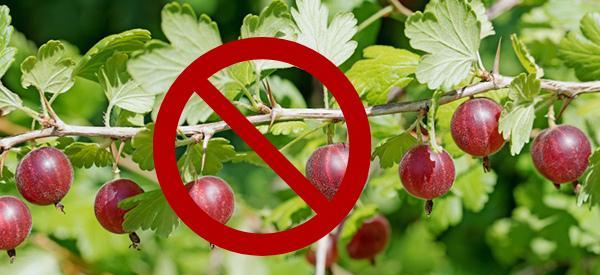
Gooseberry: This Once-Banned Berry Helps People With Diabetes
American gooseberries (Ribes hirtellum) are a round, juicy fruit similar in size and taste to grapes. The gooseberry is rich in phytonutrients and other antioxidants as well as Vitamins C and E, making it a tasty and potent means of fighting type 2 diabetes. Because they have so many health benefits and are a common ingredient in jams, jellies, juices, and even wines, many people are surprised to know that gooseberries were once illegal in the United States.
During the early 1900s, the federal government banned the growing of gooseberries and other Ribes ssps because they contributed to the spread of white pine blister rust, a fungal disease fatal to white pine species. The federal ban disappeared in 1966 (although some states continue to ban all Ribes species), allowing gooseberry cultivation to resume. In this article, we’ll go over the health benefits of this versatile fruit, which includes symptom relief for those living with diabetes.
All About the Gooseberry
During the early 1800s, all of Europe plunged into a gooseberry craze. Growers formed dedicated clubs and organized competitions over who could grow the heaviest berries. In 1845 there were over 170 gooseberry shows in a single year, and soon after these events began taking place in the United States.
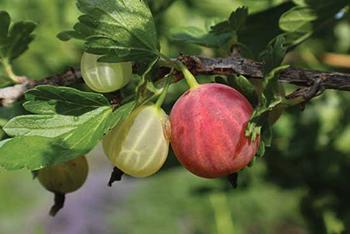
American gooseberries, which were native to the northeastern and north-central regions of the United States and Canada, became a culinary staple in everything from pastries to meat and vegetable dishes.
In the early 1900s, New York was growing approximately 2,700 acres of it to meet demand.
The aforementioned ban halted production, but once it was lifted, gooseberries gradually resumed their reputation as a food source and natural remedy for illnesses like diabetes and even cancer.
Gooseberries and Blood Sugar Control for Diabetes
High blood sugar levels contribute to the development of type 2 diabetes as well as dementia, stroke, and heart disease. Gooseberries have several properties that may help manage blood sugar levels.
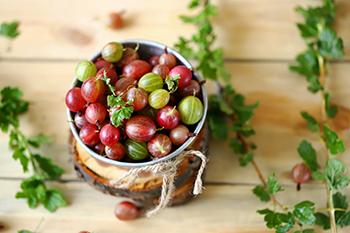
- These tart berries are high in fiber, which slows the absorption rate of sugar into your bloodstream, thereby preventing sudden spikes in blood sugar levels.
- These test tube studies found that gooseberry extract is a potent alpha-glucosidase inhibitor. In other words, it prevents special enzymes in your small intestine from moving sugar from your gut into your bloodstream.
- Gooseberries are a rich source of chlorogenic acid, which can help control blood sugar levels after eating starchy foods by slowing carbohydrate absorption.
Benefits of Indian Gooseberries (Amla)
One variety, the Indian gooseberry (Amla), has long been used as an ayurvedic remedy for maintaining steady blood sugar levels and preventing it from spiking after meals. There appears to be a scientific basis for its use in managing diabetes: this study noted,“ Although there is minimal human evidence on amla in the scientific literature, it appears to be very promising as it could lower blood glucose in both healthy people and diabetics.”
Below are some of the reasons why amla is such a potent remedy for diabetic symptoms:
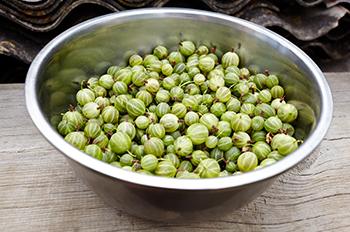
- The berries are high in chromium, which regulates carbohydrate metabolism and can help the body respond more effectively to insulin, keeping blood sugar levels under control.
- Amla is rich in Vitamin C, a powerful antioxidant. This study found a correlation between Vitamin C levels and diabetes symptoms. Research suggests that a link exists between oxidative stress and conditions like diabetes, and amla can help reverse the damaging effects of oxidation.
Households that observe ayurvedic medical practices will make large jars of ‘murabbas,’ which consists of amla fruit boiled and cooked in sweet syrup before being flavored with cardamom. The recipe is below.
- Prick 2.2lbs (1kg) of amla with a fork. Dissolve 1 tsp of chemical lime in enough water to cover the fruit and soak overnight. The following morning, remove the amla, wash, and soak in the chemical lime-water mixture again overnight.
 The next morning, drain and wash the fruit. Squeeze and rinse well to get rid of residual lime.
The next morning, drain and wash the fruit. Squeeze and rinse well to get rid of residual lime.- Boil enough water to cover the amla and cook until tender and translucent. Drain and set aside.
- Combine 3.3lbs (1.5kgs) of sugar and 1 tbsp of lemon juice in six cups of water, skimming off any scum that may rise to the surface.
- Add the amla, bring to a boil, and simmer for five minutes. Then allow to cool and store in a clean and airtight jar. Add cardamom or another flavoring of your choice.
Other Health Benefits of Gooseberries
Gooseberries appear to have a beneficial effect on different illnesses.
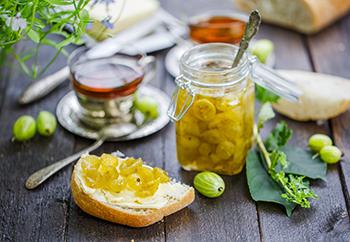
- They contain copper, which is important for the brain, immune system, heart, and circulatory system.
- Their manganese content supports healthy bone formation, metabolism, and immune response.
- Potassium is essential for normal cellular function.
- Dietary fiber from gooseberries can help reduce cholesterol, blood pressure, cholesterol, risk of heart disease and certain cancers.
- The organic acids that give gooseberries their tart taste can reduce one’s risk of stroke and Alzheimer’s disease.
Best Ways to Consume Gooseberries
Raw gooseberries provide the greatest health benefits. The riper they are, the sweeter their flavor, so if you’re not a big fan of tartness, go for ripe berries or certain varieties known to be sweeter, such as Martlet or Captivator. After washing them and chopping off the top and bottom tips, try enjoying them in the following ways:
- Eating them as a healthy standalone snack.
- Adding them to salads
- Using them as a yogurt or cereal topping
- Making a jam
Gooseberries are also key ingredients in a variety of dishes, such as chutneys, jams, and baked goods. However, these recipes are high in sugar and the cooking process destroys many of the antioxidants and phytonutrients that the berries contain. Whenever possible, consume them fresh.
Gooseberries are highly nutritious fruits that are rich in antioxidants, vitamins, and minerals while remaining low in calories. While there hasn’t been a huge amount of research done specifically on gooseberries, they definitely contain nutrients that have a beneficial impact on blood sugar levels. If you or someone you know is diabetic, adding gooseberries to one’s daily diet can lead to benefits that go beyond delicious taste alone.
You may also like:
How to Use Mulberry Medicinally
Erratic Blood Sugar? Never Eat This Veggie (Video)
Elderberry Syrup With Echinacea and Goldenseal






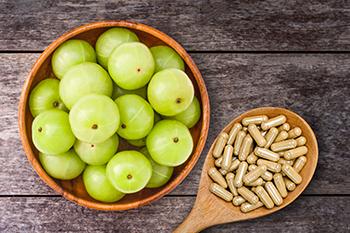 The next morning, drain and wash the fruit. Squeeze and rinse well to get rid of residual lime.
The next morning, drain and wash the fruit. Squeeze and rinse well to get rid of residual lime.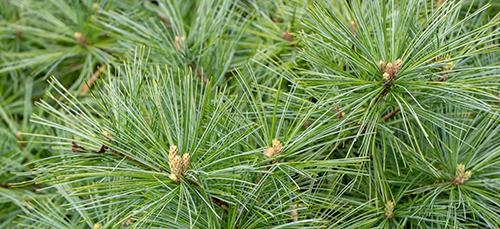

The recipe that includes 3.3 lbs of sugar does not sound very diabetic friendly. Any recommendations for using a sugar substitute for this recipe?
Right? I was thinking the same thing!
Use small amount of honey or Agua syrup instead. I use raw honey, 1 to 2 Tbs
Both honey and ‘agua’? SYRUP are going to raise blood sugar! Neither is diabetes friendly. ANY form of glucose or fructose or sugar in any form is NOT a diabetic food.
Honey actually helps reduce blood sugar, especially when combined with cinnamon &/or apple cider vinegar. Of course anything is negative when overused, and it’s best if eaten raw & unfiltered; the wonderful thing about honey is that you really don’t need very much. Many mornings, I’ll mix Greek yogurt with honey, cinnamon, ground anise, granola, and frozen berries for an amazing breakfast. My blood sugar and digestion thank me every time I eat this.
Try Honey or stevia
I love these articles but was blown away at the contradiction. Honey it is.
I have been trying to buy your book for years now however I live on Vancouver Island in Canada. Is there any way to get it shipped here? Would love to have this book!
Hey Betty, if you are talking about “The lost book of herbal remedies” by Nicole Apelian, PH.D & Claude Davis, i ordered it through the website askaprepper.com, the website Claude has. good luck!
First i have lived in the northeast my whole life and have never seen a gooseberry anywhere. Not even in stores. Secondly, i am beginning to question the reliability of your expertise and articles…On what planet is adding 3.3 lbs of sugar to make a diabetic friendly jelly a good idea? These ayurvedic/therapeutic claims are looking more suspect all the time. And there never seems to be any scientific research to back it up.
I live in md and our woods at edge of my property are Full of them. When the birds eat and poop the drop the seeds everywhere. By the way, just because she says you can make a jelly with these, which is delicious, doesnt necessarily mean THAT is the treatment for diabetes. She says that the fiber and tart berries are the best way to eat them.
Love your articles you share and appreciate your commitment to good health.
I’m ordering some Amla online, to try after googling since your article piqued my interest, whilst keeping my eyes open for fresh gooseberries in the nearby marketplaces.
My sweet tooth was cautioned after reading your comment that
“Gooseberries are also key ingredients in a variety of dishes, such as chutneys, jams, and baked goods. However, these recipes are high in sugar and the cooking process destroys many of the antioxidants and phytonutrients that the berries contain. Whenever possible, consume them fresh.“
Thank you once again.
Daniel, Xylitol is a natural sweetener that is diabetic friendly and is a 1 to 1 ratio
where can i find gooseberries in Littlebrook Estates, Joshua, TX, Johnson county?
Please everyone read carefully. That is 3 pounds and 3/10 pound. NOT 33 pounds. The error is not the authors.
Oil from amla fruit can be used topically on the hair & scalp to help strengthen and nourish it. It’s a good carrier oil for hair remedies. I have to do more research to recall more details, though I do remember learning about amla oil and being impressed.
HI I LIVE I THE UK ENGLAND ARE ANY OF THE PLAINT IN THE BOOK GROWN OVER HEAR WOULD BE NICE TO FIND OUT IF WE ONLY HAVE ONE TIPE OF GOOSEBERRY OR MORE
Hello everyone! Spicy Amla pickle -Indian style can be made with organic cold pressed mustard oil or EVOO organic. No need to add sugar-adjust the spice to your taste/tolerance. Check out the recipe on hebbarskitchen.com. It’s really delicious. I make it often. If you have access to an ethic Indian grocery store you can buy frozen Amla/Indian gooseberry in the store -sometimes fresh ones available during season.